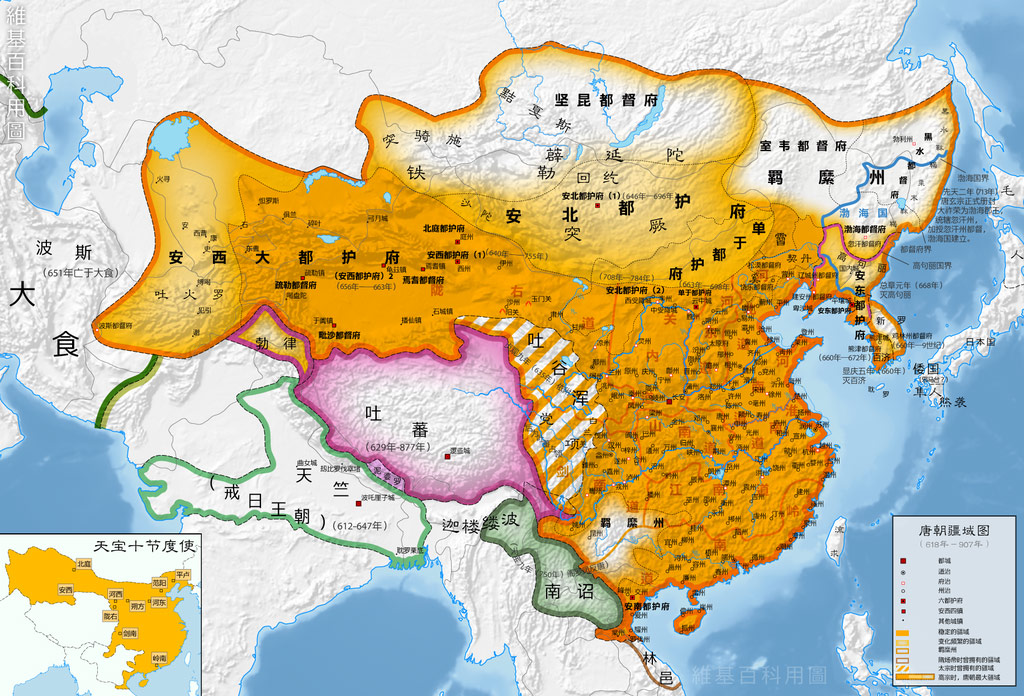The Tang Dynasty, created during the rift left by the ruthless leadership of the Han Dynasty, ushered in what many consider to have been China’s golden age.
At its peak, the vast Tang Dynasty stretched from the Tarim Basin to the Korean Peninsula, and from Mongolia south into what is currently Vietnam.
The far reaching Tang Dynasty territory included its capital city of Chang’an, centered in the midst of the empire with over one million inhabitants and was considered the largest city on earth at that time.
Circuit Divisions
The entire dynasty was initially divided into ten circuits (dao) which grew as the empire did. Later these circuits (prefectural seats) included:
• Jingji located in modern China in southern Shaanxi
• Guannei located in modern China in northern Shaanxi
• Duji located in modern China in western Hinan
• Henan located in modern China in eastern Henan and Shandong
• Hedong located in modern China at Shanxi
• Hebei located in modern China at Hebei, Beijing, and Tianjin
• Longyou located in modern China at Gansu and Ningxia
• Shannan-Dong located in modern China at Hubei
• Shannan-Xi located in modern China at Sichuan and Chongqing
• Huainan located in modern China across northern Jiangsu and northern Anhui
• Jiangnan-Dong located in modern China spreading across southern Jiangsu, southern Anhui, Shanghai, Zhejiang, and Fujian
• Jiangnan-Xi located in modern China at Jiangxi and eastern Hunan
• Qianzhong located in modern China at western Hunan, and Guizhou
• Jiannan located in modern China in southern Sichuan
• Lingnan located in modern China spread across Guangxi, Guangdong, and Hainan
Capital Cities
There were six capital cities. The main capital was called Chang’an and occupied the area where Xi’an and Shaanxi are located in modern China. The central capital was called Zhongdu and occupied the area where Yongji and Shanxi are located.
To the east, the captial was called Dongdu and occupied the area where Luoyang and Henan are now located. On the western side, the capital city of Xidu was located in parts of China now occupied by Fengxiang and Shaanxi.
To the south was the capital city of Nandu occupying parts of Chengdu and Sichuan, and to the north, the capital city of Beidu which occupied parts of Taiyuan and Shanxi.
There was also an eastern (Andong), northern (Anbei), western (Anxi) and southern (Annan Duhufu) protectorate which kept the peace.
The Tang Dynasty spread across much of what is now modern China and is considered to be the high point in Chinese civilization.
